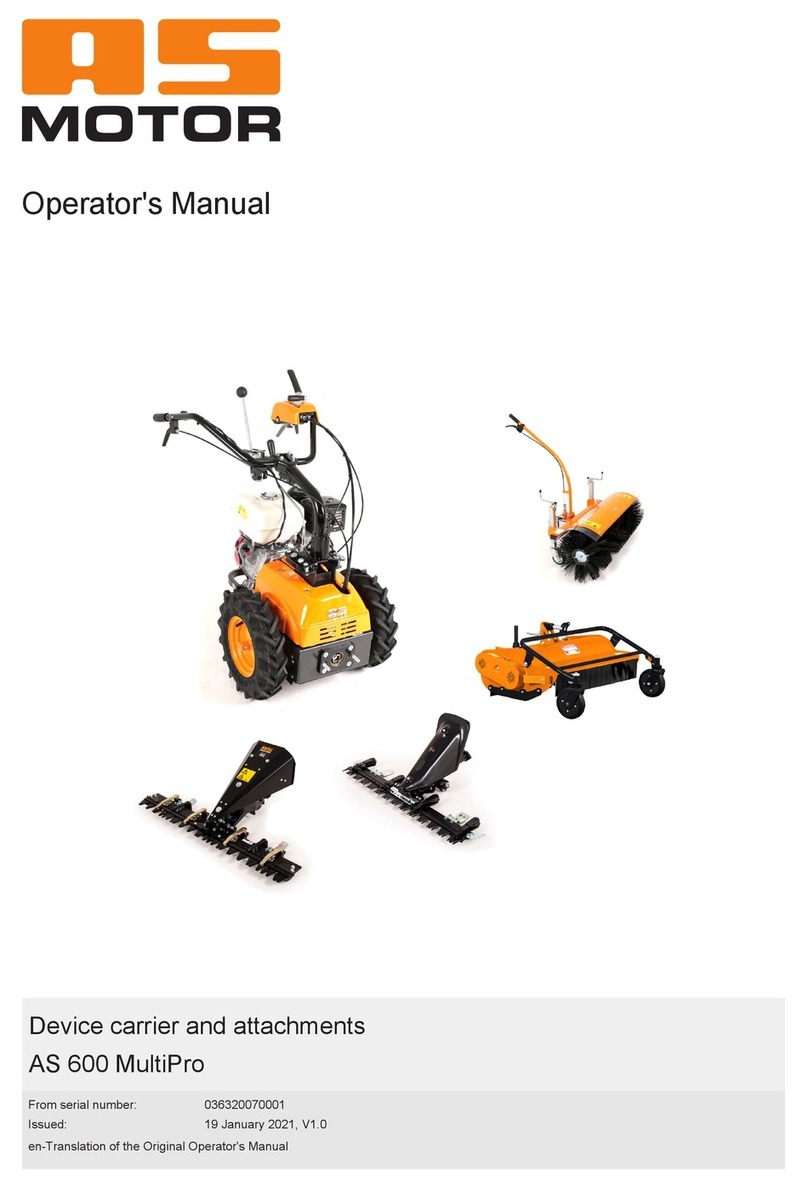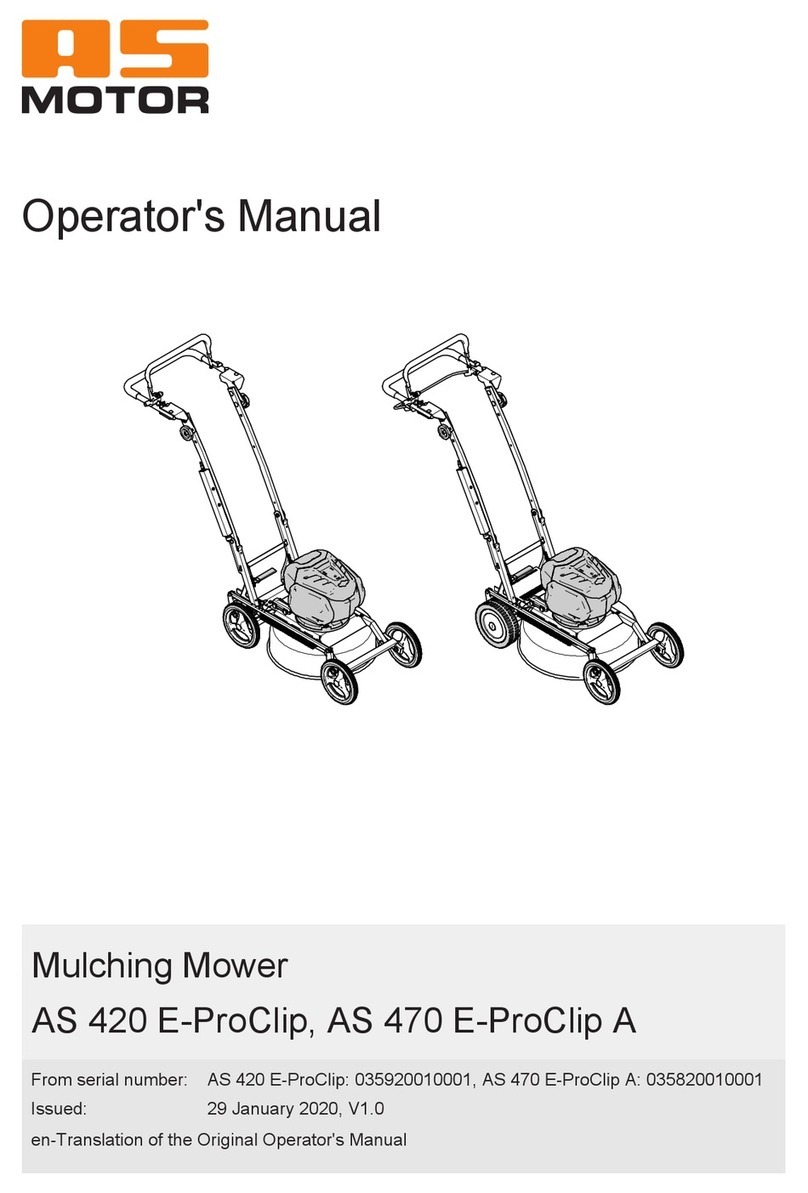
3
Contents
Notes on the operating manual............. 2
Contact .................................................... 2
Device data.............................................. 2
Intended use............................................ 2
Explanation of the symbols................... 4
Symbols in the instructions...................... 4
Warnings................................................. 4
Signs on the device................................. 4
Safety instructions ................................. 6
Get informed!........................................... 6
User restrictions and hours of operation.. 6
Safe handling of fuel................................ 6
Check the device prior to use.................. 7
Danger area............................................. 7
Use caution during operation................... 8
Prior to brushing...................................... 8
Use caution during brushing.................... 9
Caution at steep slopes........................... 9
When work is completed......................... 10
Use caution during maintenance and re-
pair........................................................... 10
Device description.................................. 11
Control elements .................................... 12
Information on brushing........................ 13
Prior to starting....................................... 13
Fuel.......................................................... 13
Tanking up............................................... 13
Checking the engine oil level................... 13
Starting.................................................... 14
Starting the device................................... 14
Adjusting the contact pressure of the
brushes.................................................... 14
Adjusting pressure of brushes................. 15
Driving ..................................................... 15
Driving..................................................... 15
Turning.................................................... 15
Brushing at a kerb or wall...................... 16
Switching off and parking...................... 16
Transport................................................. 17
Loading.................................................... 17
Unloading the device............................... 17
Maintenance............................................ 18
Maintenance overview............................. 19
Cleaning the device................................. 21
Basic inspection....................................... 21
Checking the engine brake...................... 21
Checking the brushes.............................. 22
Changing the brushes............................. 22
Checking the brush strip and the brush
holder....................................................... 23
Maintaining the engine............................ 23
Checking the engine oil level................... 23
Checking the spark plugs........................ 24
Maintaining the air filter........................... 24
Checking the drive................................... 24
Assembly................................................. 25
Scope of delivery..................................... 25
Unpacking................................................ 25
Guide bar and handlebar......................... 25
Dirt collecting bag.................................... 26
Storage .................................................... 27
Storing the device.................................... 27
Longer storage........................................ 27
Restarting................................................ 27
Spare parts.............................................. 27
Wear parts............................................... 27
Disposal................................................... 27
Warranty.................................................. 27
Troubleshooting ..................................... 28
Technical data......................................... 30
Accessories............................................. 31
Declaration of conformity...................... 32





























